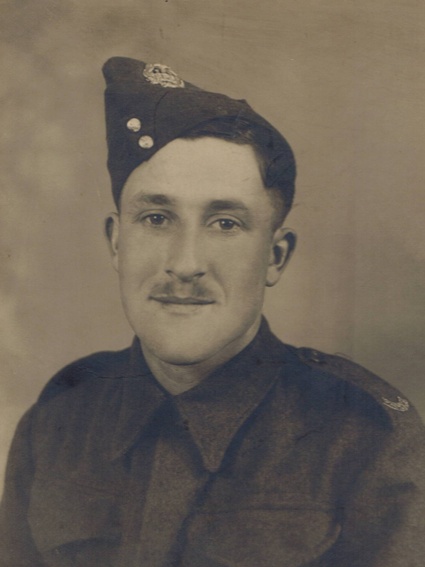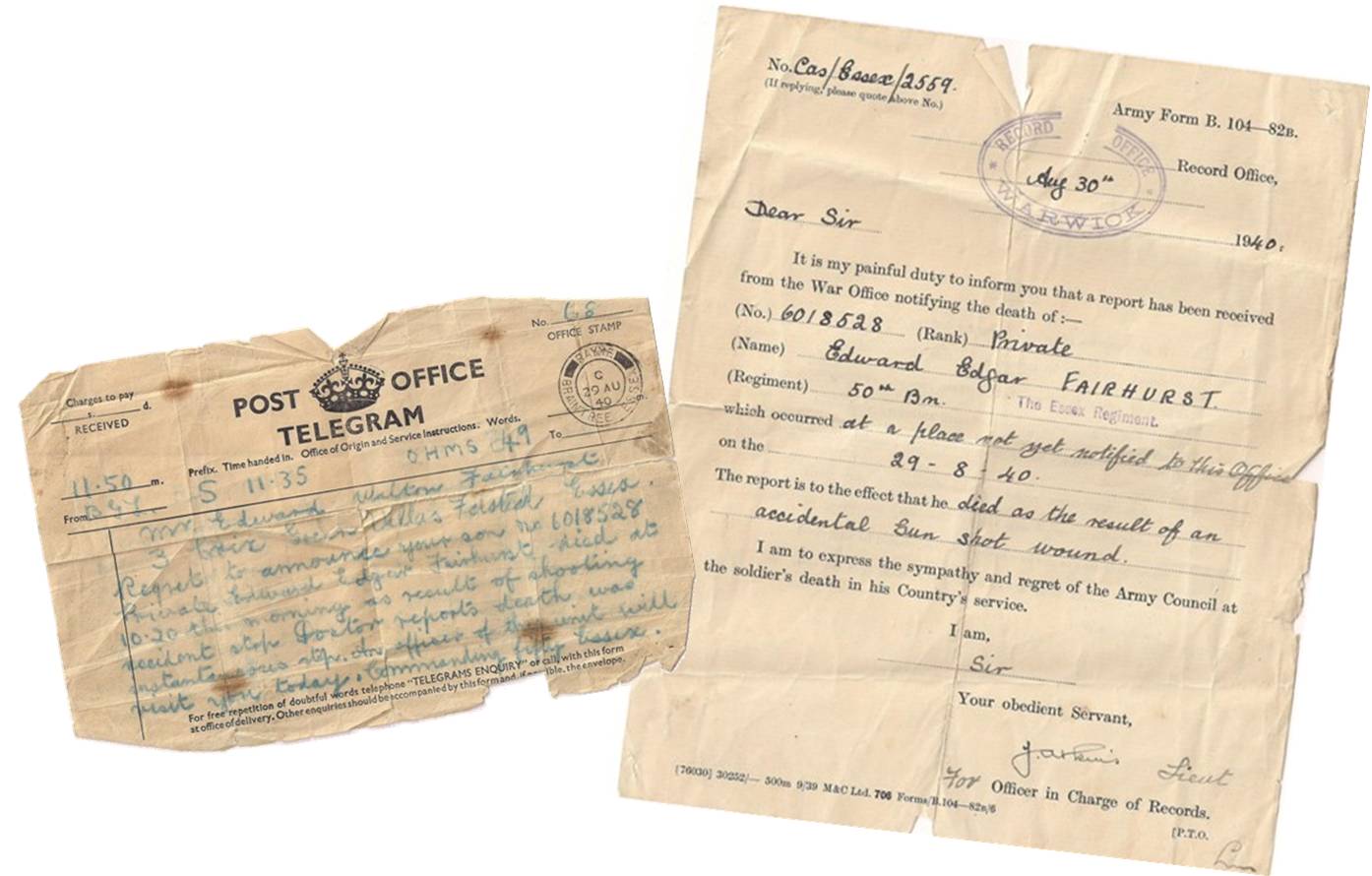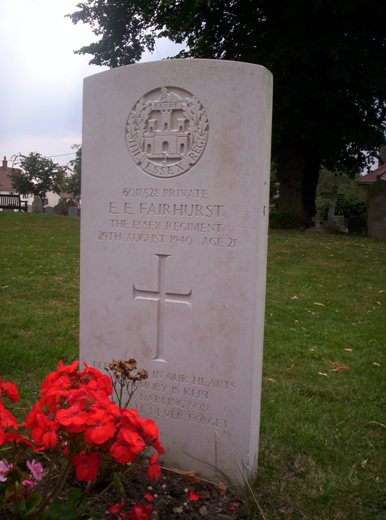Edward 'Edgar' Fairhurst
Edward 'Edgar' Fairhurst was born in in 1918, at a
house in Mill Lane, Felsted. The family then moved to Ladysmith
Cottages, Chelmsford Road, before moving again to live at 3 Crix Green Villas, Crix Green.
Known by his second name Edgar was the eldest of eight children of Edward Walter and Theodosia Mary (née Mead) Fairhurst.
He left school at the age of fourteen to work at Rutlands Farm as a poultry worker for a Mr. Stevens. Edgar never married.
He joined the army early in 1940 and carried out his army training at Warley Barracks, Brentwood.
'Edgar' served as a Private Soldier 6018528 with the 50th Battalion the Essex Regiment.
The records of the Essex Regiment Museum tell us that 'Edgar' was part of a battalion based in Billericay, Essex, and was shot accidentally.
In 1940 he served as the Gardener at 98 High Street, Billericay, where officers were billeted and the home Guard had their Headquarters
He died aged 21 on 29th August 1940. Edward was buried at Holy Cross Churchyard, Felsted, on Tuesday 3rd September 1940. The Essex Regiment provided an honour guard for the funeral.


Newspaper report of Saturday, August 31st, 1940.
SOLDIER ACCIDENTALLY SHOT.
The Divisional Coroner, Mr D.F. Beccle, sat at the Billericay Police Court on Friday morning to enquire into the death of Private Edgar Edward Fairhurst, who was shot in the garden of 98 High Street on the previous day by an officer’s batman whilst handing a pistol to the deceased.
The officer to whom the pistol belonged said he shared his billet with another officer and kept his pistol in a drawer which was usually locked. It was arranged that the officer leaving the room last would lock the drawer. He could not remember doing so on the morning in question. The pistol was not loaded, but had a clip of five cartridges in the magazine. Pte. Wickson, his batman, had had no instructions to clean the pistol on that day. Wickson had previously cleaned the pistol for him, and it was laid down in regulations that it was the duty of an officer, when giving such instructions to see that the pistol was unloaded. Some days before the accident, he had bought some 4 x 2 (flannel) to the billet and put it on the table, remarking that it would be useful for cleaning the pistol. Wickson may have taken it to be an order. On Thursday morning the pistol was in the drawer, but Wickson had no reason to go to the drawer.
Pte. Frederick Charles Wickson said he had served with the Colours for seven years and had a good general idea of firearms. Three or four days before the accident the officer had brought to the billet some pieces of 4 x 2 and put them on the table saying they would do to clean the pistol. He understood by that he was to clean it. He forgot all about it until Thursday morning, when after tidying up the room, he noticed the drawer, which was usually locked, slightly open. In the partly closed drawer he noticed the pistol and thought it a good opportunity to clean it. He took the pistol out of the drawer, and demonstrated in the witness box how he proceeded to handle it. During the manipulation a cartridge must have gone into the breach. There was no cleaning rod on the pistol and, seeing Fairhurst, who was acting as gardener at the house, approached him with the idea of asking him to make a cleaning rod. He was explaining what he wanted when the pistol went off and deceased dropped. He did not remember pulling the trigger.
The Coroner pointed out that the pistol was in perfect condition and that it could not have been discharged without some pressure being put upon the trigger.
Wickson admitted that he must have pulled the trigger, but did not remember doing so. There was no sky-larking and he was only with Fairhurst a moment.
P.C. Toomes said that he was called to the billet and saw deceased lying on a table in the kitchen. He took the necessary steps to have him removed to hospital.
Dr. F.E. Camps of Chelmsford, said deceased had sustained lacerations of the jaw, no doubt caused by the fall. There was a small entry wound in the chest, below the fourth rib, and heart and lungs had been punctuated. The wound was consistent with the calibre of the bullet produced.
The Coroner entered a verdict of accidental death.
